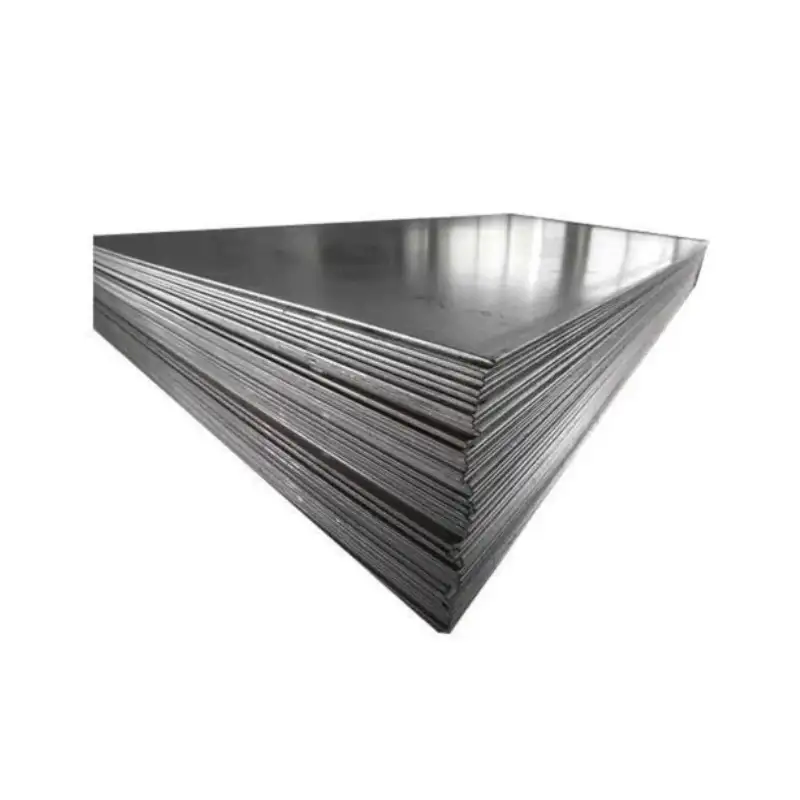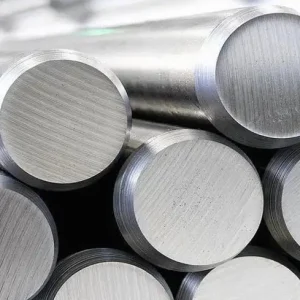DC01, DC02, DC03, DC04, DC05, DC06 are standardized European cold-rolled low-carbon steels specified in EN 10130 for parts that require very good formability and consistent surface quality. For general structural press-formed components, DC03–DC06 are the common choices; DC01 and DC02 are suitable when slightly higher strength or different deoxidation practice is acceptable. For buyers seeking competitive supply from China, MWAlloys offers factory-direct pricing, fast stock delivery, and test documents to meet EN 10130 requirements. When selecting a grade, prioritize the target forming severity, required surface finish (A or B), and whether a coated (galvanized) product under EN 10152 is needed.
Origin, designation and standards
These grades are defined by the European standard EN 10130: Cold-rolled low carbon steel flat products for cold forming — Technical delivery conditions. The designation system (DC01 … DC07) encodes low-carbon cold-rolled qualities graded mainly by maximum permissible yield strength and by deoxidation practice. EN 10130 controls chemical limits (ladle analysis), mechanical properties, surface quality, and delivery conditions for “skin-passed” products used in pressing and deep drawing.
How DC01 → DC06 differ
-
DC01 (1.0330) — non-alloy quality; manufacturer’s choice of deoxidation; slightly higher allowable carbon (relative to DC03–DC05). Use when standard formability with robust supply is needed.
-
DC02 — intermediate grade sometimes used where DC01 is too strong and DC03 is too soft; not always listed by every mill.
-
DC03 → DC05 — progressively improved formability and lower yield strength; typically aluminium-fully killed (controlled deoxidation) providing stable properties for deep drawing.
-
DC06 — an “alloy-quality” ultra-low carbon grade optimized for demanding deep-drawing and complex forming; often specified with titanium or niobium to control nitrogen and improve formability; industry suppliers produce DC06 to tighter chemical limits for highest formability.
Chemical composition
The table below reproduces the maximum ladle analysis values from EN 10130 (typical maximums by grade). These are the values mills must meet at the time of ladle analysis unless other limits are agreed in the order. For certified orders specify the standard (EN 10130) and required surface quality (A or B).
| Grade | Steel no. | C (max) % | P (max) % | S (max) % | Mn (max) % | Ti (max) % |
|---|---|---|---|---|---|---|
| DC01 | 1.0330 | 0.12 | 0.045 | 0.045 | 0.60 | — |
| DC02 | (varies by mill) | (see order) | — | — | — | — |
| DC03 | 1.0347 | 0.10 | 0.035 | 0.035 | 0.45 | — |
| DC04 | 1.0338 | 0.08 | 0.030 | 0.030 | 0.40 | — |
| DC05 | 1.0312 | 0.06 | 0.025 | 0.025 | 0.35 | — |
| DC06 | 1.0873 | 0.02 (typical EN limit) | 0.02 | 0.02 | 0.25 | 0.30 (Ti may be used; Nb substitution allowed) |
(Values are maximum ladle analysis values from EN 10130 Table 2; small variations occur when a supplier offers alloyed variants — e.g., for improved strength or deep-drawing. Always confirm the mill heat analysis (trace report) with the mill test certificate.)
Mechanical properties
Mechanical properties in EN 10130 apply to skin-passed products and are valid for a limited storage period in some grades (notably DC01). For design, EN gives recommended lower limits for Re in several grades.
| Grade | Re (max) / design lower limit (MPa) | Rm (MPa) | Min elongation A80 (%) | r₉₀ (min) | n₉₀ (min) |
|---|---|---|---|---|---|
| DC01 | ≤ 280 (design lower limit 140 MPa) | 270–410 | ≥ 28 | — | — |
| DC03 | ≤ 240 (design lower limit 140 MPa) | 270–370 | ≥ 34 | 1.3 | (—) |
| DC04 | ≤ 210 (design lower limit 140 MPa) | 270–350 | ≥ 38 | 1.6 | 0.180 |
| DC05 | ≤ 180 (design lower limit 140 MPa) | 270–330 | ≥ 40 | 1.9 | 0.200 |
| DC06 | ≤ 170 (design lower limit 120 MPa) | 270–330 | ≥ 41 | 2.1 | 0.220 |
(Notes: for very thin gauges the required elongation may be reduced by EN 10130; the upper Re limit for DC01 is only valid for a short period after manufacture, so form the parts soon after availability if tight formability is required.)
Physical behaviour, formability and storage notes
-
Skin-pass and stretcher marks: Mill skin-pass helps reduce stretcher marks forming during subsequent forming. EN 10130 guarantees absence of stretcher marks for a stated period (e.g., 6 months for DC03–DC05; limited for DC01). Prolonged storage can change the cold work state for DC01 and reduce formability; plan production timing.
-
Deep drawing: DC04–DC06 give progressively better r-values and strain-hardening behaviour; DC06 is used for the most severe deep-drawing.
-
Weldability and coatings: All grades are suitable for standard welding methods, but the welding procedure should be specified for critical applications. If a galvanized finish is required, refer to EN 10152 (electrolytically zinc coated) and confirm compatibility with downstream painting.
Surface quality, finishes and coated variants
EN 10130 defines surface quality A or B and surface finish (bright, semi-bright, normal, rough) with specific Ra roughness limits. If cosmetic finish or heavy painting is planned, specify quality B or tighter, and declare whether oiling is required for shipment. For galvanized or electrolytic zinc coatings choose EN 10152 / EN 10139 options and specify coating mass and pretreatment.
Typical mill specifications (thickness, width, tolerances)
Common commercial offerings for DC-grades (mill to mill differences apply):
-
Thickness: 0.10 mm up to about 2 mm (many mills supply 0.1–1.5 mm in coils; plates/cut lengths up to 2 mm).
-
Width: 600–1,500 mm standard; can be wider (up to 3,500 mm) on request; slit coils available.
-
Edges: mill edges or trimmed; tolerances per EN 10131. Always specify edge condition, coil weight limits and packing for export.
Applications by grade
-
DC01 / DC02: simple pressings, housings, chassis frames where high formability isn’t critical.
-
DC03 / DC04: appliance panels, light automotive panels, brackets, parts needing reasonable draw depth.
-
DC05 / DC06: intensive deep-drawing, complex formed components (automotive inner panels, fuel tanks, sophisticated stamped components).
Welding, cutting, forming & secondary operations
-
Cutting: laser, shearing, plasma — standard procedures apply; burr control needed for thin gauges.
-
Forming: springback depends on yield and thickness; DC05–DC06 show best r-values and lower springback for deep draws. Use controlled lubrication for complex draws.
-
Welding: standard MIG/MAG and resistance spot welding work well. For galvanized variants check for zinc fume mitigation and adjust welding parameters. Request the mill’s welding recommendations when accepting coated surfaces.
2025 Price comparison
Market prices vary daily. The table below offers representative mid-2025 ranges for cold-rolled coil (CRC); use these only for budgeting — request live quotes. Sources and regional context are cited under the table.
| Region | Representative CRC price (USD / metric tonne) — mid-2025 (indicative) | Notes / source |
|---|---|---|
| China (domestic spot / FOB) | ~ USD 450–520 / t | Mid-2025 China CRC ranges reported around USD 450–520/t (monthly volatility). |
| Europe (Germany / EU spot) | ~ USD 800–1,000 / t | European CRC showed higher manufacturing and energy costs; IMARC and regional reports cite Germany roughly USD 800–900/t in Q2-2025. |
| USA (domestic CRC/coil) | ~ USD 1,000–1,150 / t | North American CRC mid-2025 ranges reported near USD 1,050–1,110/t depending on mill and mill grade. |
How to use these numbers: ask suppliers for (a) mill test certificate, (b) EXW or FOB/incoterm clarifications, (c) packaging and coil weight details, and (d) lead time. Chinese factory-direct offers commonly undercut Europe/USA base prices when buyers accept FOB Tianjin/Shanghai and agree payment terms. Market dynamics (energy, scrap, exchange rates, logistics, CBAM/EU duties) can shift these ranges quickly — always get firm quotes.
Buying checklist & MWAlloys commercial offering
Technical checklist to give suppliers:
-
Standard: EN 10130:2006 (specify exact edition) and whether galvanized (EN 10152) is required.
-
Grade: DC01 / DC02 / DC03 / DC04 / DC05 / DC06 (explicit).
-
Surface quality: A or B and finish (bright / semi-bright / normal).
-
Thickness, width, coil weight, edge condition.
-
Required inspection certificate: EN 10204 2.1 / 3.1 / 3.2.
-
Special processing: skin-passed / non-skin-passed / annealed / pickled / oiled.
-
Welding or painting compatibility requirements.
Why MWAlloys: MWAlloys is a Chinese factory supplier with experience in precision cold-rolled steel for forming markets. For customers who specify EN 10130 DC grades, MWAlloys offers:
-
Factory-direct pricing (100% factory price advantage on standard stock items).
-
Fast stock delivery from Chinese warehouses for common gauges and DC grades; sample and certification support (mill test reports).
-
Customization: slit widths, coil packing, and basic secondary processing (cut-to-length, annealing) available under order terms.
FAQs
-
Which DC grade is best for deep-drawn automotive inner panels?
DC05 or DC06, with DC06 used for the most demanding draw depths due to lower C and higher r-value. -
Can DC01 be electro-galvanized?
Yes. when galvanizing is required use EN 10152 (DC01+ZE) and specify surface finish and coating mass. -
How long after delivery should I form DC01 parts?
EN 10130 recommends forming DC01 soon; extended storage may reduce formability. For DC03–DC05 mechanical properties are guaranteed for longer (EN provides the details). -
Are DC-grades weldable?
Yes, standard welding processes apply; for coated products ensure fume controls and adjust parameters. -
Do mills offer DC grades in coil and sheet/cut-length?
Yes; coils, slit coils and cut lengths are standard. Confirm coil weight and edge condition at order. -
Can DC grades be supplied with higher strength?
Some can be supplied as alloyed steels (e.g., with small additions of B or Ti) by agreement with the purchaser; specify when ordering. -
What certificates should I request?
Typical: mill test certificate (EN 10204 2.1) or specific 3.1/3.2 documents for higher assurance. State required certificate at enquiry. -
Is DC06 the same across all mills?
The EN limit is fixed, but some producers provide enhanced DC06 variants (e.g., SSAB Form 06) with tighter guarantees for r-value and surface finish. Compare the supplier’s technical datasheet. -
How do I minimise stretcher marks?
Choose skin-passed products, control lubrication during forming and avoid excessive storage after skin-pass. EN 10130 lists skin-pass recommendations and validity timelines. -
How to compare price quotes fairly?
Compare on equal terms (grade, thickness, surface quality, certificate, incoterm, packing) and include logistics, duties and handling fees. Ask suppliers to break down mill price, wrapping, testing and freight.





